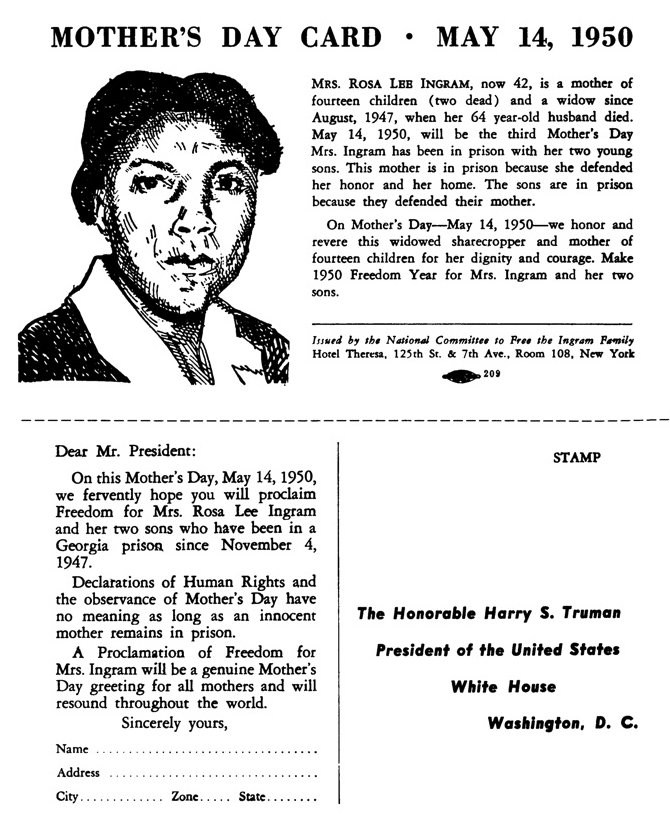Founded in Detroit, Michigan in 1946, the Civil Rights Congress (CRC) arose out of the merger of three groups with ties to the Communist Party USA: the International Labor Defense (ILD), the National Negro Congress, and the National Federation for Constitutional Liberties. Embodying the spirit and tactics of all three of its predecessors, the CRC concentrated on legal defense and mass political action on behalf of victims of legal frame-ups. It briefly became a major force in post-WWII battles for civil rights for African Americans, and civil liberties for white and black labor movement radicals, before becoming a victim of Cold War anticommunism and government repression. Former ILD secretary William Patterson led the group throughout its existence.
Major Civil Rights Congress campaigns on behalf of black defendants included the cases of Willie McGee, the Martinsville Seven, the Trenton Six, and Rosa Lee Graham. The CRC was also instrumental in publicizing the lynching of Emmett Till and pressing authorities for prosecution of his murderers. CRC campaigns helped pioneer many of the tactics that civil rights movement activists would employ in the late 1950s and 1960s. Beyond this, the CRC was among the first organizations to expose American racism in the international arena and to connect it to United States Cold War foreign policy in the decolonizing world. In 1951 these efforts climaxed when William Patterson presented his landmark study We Charge Genocide to the General Assembly of the United Nations.
Civil Rights Congress “red” cases centered largely on victims of various legislative efforts to suppress suspected members of the Communist Party such as the Smith Act, the McCarran Act, and the House Un-American Activities Committee. Throughout its campaigns the CRC often clashed with mainstream civil rights and civil liberties groups like the National Association for the Advancement of Colored People (NAACP) and the American Civil Liberties Union (ACLU). The CRC also battled internally over the issue of prioritizing “black” vs. “red” cases and endured charges of sectarianism on the Left for its perceived unwillingness to defend accused Trotskyists. By the mid 1950s the CRC was increasingly forced to defend its own members and affiliates against government prosecution. The financial strain of these efforts ultimately brought about the organization’s dissolution in 1956.

